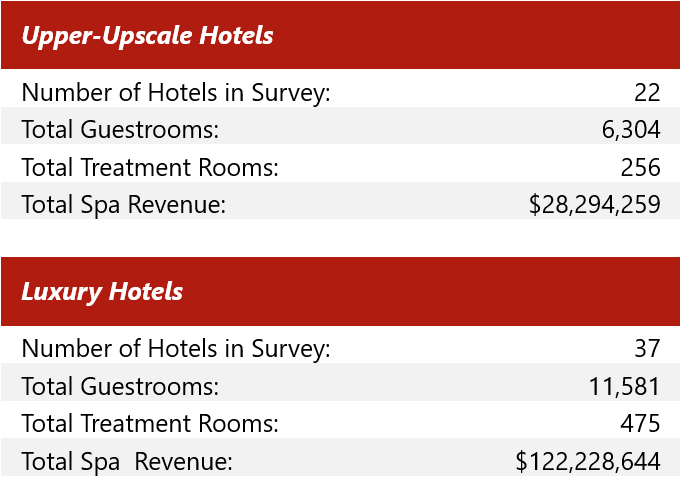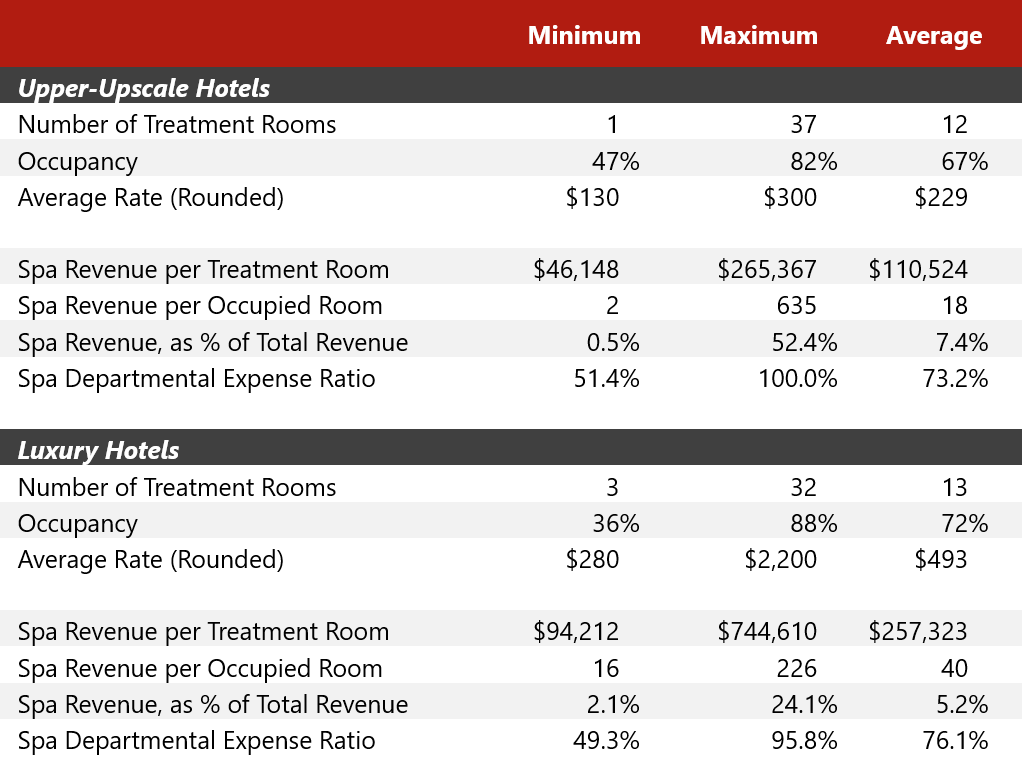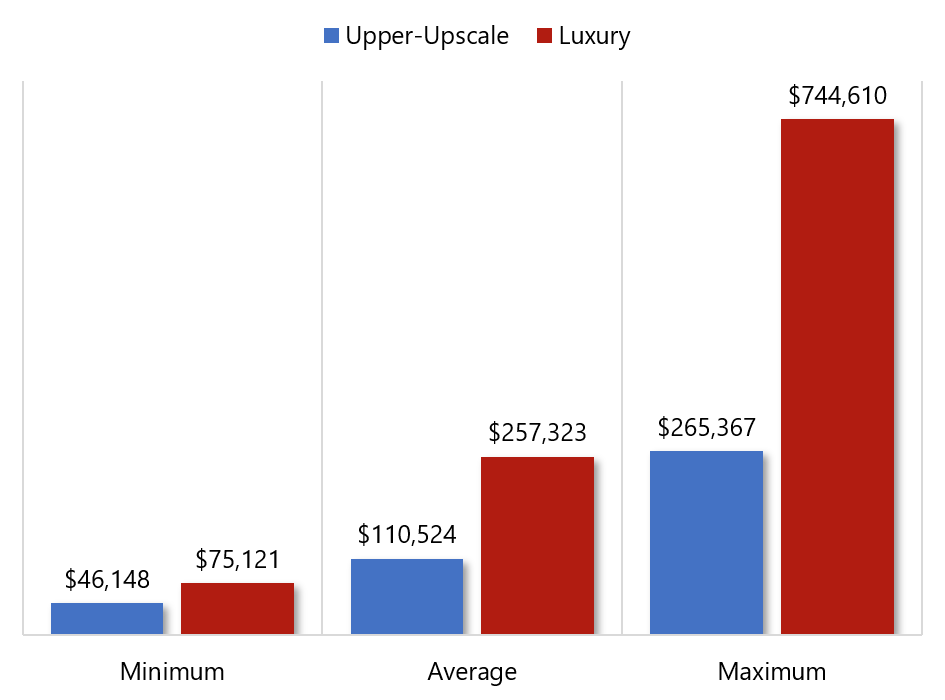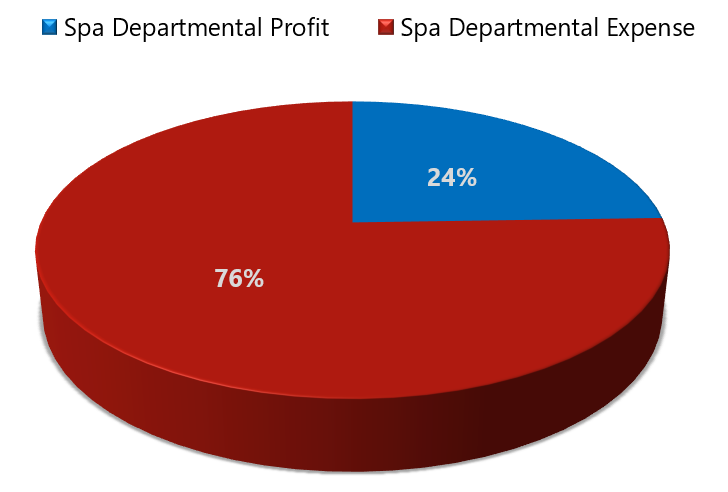 On average, spa and wellness departments run profitably and can contribute significantly to a hotel’s bottom line. This report is our second annual performance report published by HVS that tracks and monitors spa department performance and profitability. The data presented reflect spa operating-statement averages and data points from 2018 through the third quarter of 2019.
On average, spa and wellness departments run profitably and can contribute significantly to a hotel’s bottom line. This report is our second annual performance report published by HVS that tracks and monitors spa department performance and profitability. The data presented reflect spa operating-statement averages and data points from 2018 through the third quarter of 2019.Across HVS’s 40 U.S. locations, our expert associates are continually consulting on hotels and resorts with significant spa and wellness operations, which are captured within their own departmental statement on an operating profit and loss statement. For the last three years, HVS has partnered with Mia Mackman, our Managing Director of Spa & Wellness Consulting, to better understand the accelerating spa and wellness assets and evolving lifestyle market.
This report reflects a sample of 59 hotels and resorts, with 22 in the upper-upscale category and 37 in the luxury category. Hotel, guestroom, and treatment-room counts are summarized in the following table, along with total spa revenue for the survey group.
Survey Participants
 Source: HVS
Source: HVS

Overall comparisons between the two hotel segments show that luxury hotels have larger spas on average, which would be expected (12 treatment rooms on average, or a median of 8 treatment rooms, for upper-upscale hotels vs. 13 rooms on average, or a median of 11 treatment rooms, for luxury hotels). Spa revenue generated per occupied hotel room can also be significantly different between the two product types, averaging $18 for upper-upscale vs. $40 for luxury hotels. Treatment-room averages reflect roughly $111,000 per room for upper-upscale hotels and $257,000 (rounded) for luxury hotels.
Survey Results
 Source: HVS
Source: HVS

Spa Revenue per Treatment Room
 Source: HVS
Source: HVS
Spa Departmental Ratios Source: HVS
Source: HVS
Spas are becoming influential assets for hotels and resorts given the increasing demand related to wellness and lifestyle programs. With growing hotel and resort pillars being developed and dedicated to well-being, examining the depth of spa and wellness performance has become a fundamental factor of strategic growth and valuation. Moreover, understanding how these assets are performing plays a critical role in core strategic planning, including ADR and RevPAR performance.
Spa Departmental Ratios

If your spa is operating at a loss or notably above the typical expense ratio for a spa, as shown here, HVS can help. Also, if you are not driving significant revenue levels from your spa operation (a full-service spa should generate 5.0% or more of total revenue, on average; in our survey, upper-upscale spas generate 5.2% of total revenue on average, and luxury spas generate 7.4% of total revenue on average), our expertise can help you derive strategies for improvement, as enhancing or modifying these evolving services can reduce expense percentages and increase opportunities for new revenue growth throughout multiple departments.
About Rod Clough, MAI
Rod Clough, MAI, President – Americas, is in his 30th year with HVS and leads the Americas region from its headquarters office in Colorado. As President, Rod has developed the vision and strategy for the Americas and oversees its execution throughout the Americas' 40 locations. He has cultivated a firm that thrives with an extraordinary culture and remains the thought leader in the hospitality consulting space. He is proud to lead a group of 175 exceptional team members that execute thousands of engagements annually. Rod also has a passion for speaking, regularly sharing the insights and thought leadership of HVS at the nation's leading hospitality conferences. Rod is a graduate of Cornell's School of Hotel Administration, a Designated Member of the Appraisal Institute (MAI), a state-certified general appraiser, and a licensed hotel broker. Contact Rod at (214) 629-1136 or [email protected].

0 Comments
Success
It will be displayed once approved by an administrator.
Thank you.
Error